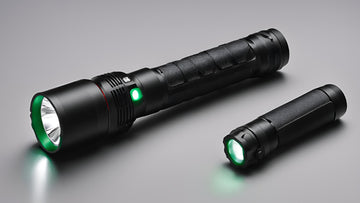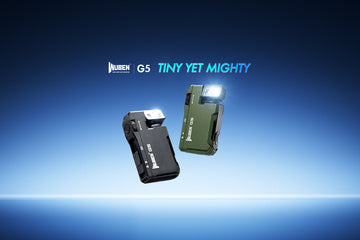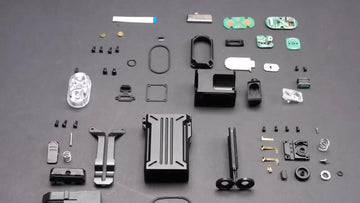
Imagine reaching for your flashlight during a power outage, only to struggle with the switch.
The right flashlight switch can make all the difference. Here, we'll delve into the various types of flashlight switches and what makes each one unique.
Importance of Flashlight Switches
The switch is more than just a button; it's the gateway to your flashlight's functionality. A well-designed switch can enhance usability, durability, and overall user satisfaction.
Common Types of Flashlight Switches
Tail Cap Switches
Tail cap switches are located at the end of the flashlight, offering a straightforward on/off mechanism.
-
Pros:
- Ease of use
- Durability
-
Cons:
- Accidental activation in pockets
-
Common Uses:
- Everyday carry flashlights
- Tactical flashlights
Side Switches
Side switches are positioned on the body of the flashlight, providing convenient thumb operation.
-
Pros:
- Ergonomic design
-
Cons:
- Less intuitive in the dark
-
Common Uses:
- General-purpose flashlights
- Headlamps
Head/Twist Switches
Head or twist switches require the user to rotate the flashlight head to turn it on or off.
-
Pros:
- Simple and reliable
-
Cons:
- Less quick to operate
-
Common Uses:
- Diving flashlights
- Simple, robust designs
Electronic/Soft Touch Switches
Electronic switches use a soft touch mechanism, often allowing for multiple modes.
-
Pros:
- Advanced features
-
Cons:
- More prone to technical issues
-
Common Uses:
- High-end flashlights
- Flashlights with multiple light modes
Specialized Switch Types
Magnetic Switches
Magnetic switches use magnetic fields to activate the flashlight, ideal for waterproof models.
-
Pros:
- Excellent reliability underwater
-
Cons:
- More complex to manufacture
-
Special Applications:
- Underwater flashlights
- Industrial flashlights
Pressure Switches
Pressure switches are designed for tactical use, allowing activation with minimal movement.
-
Pros:
- Favored in high-stress situations
-
Cons:
- May wear out faster with heavy use
-
Tactical Uses:
- Military flashlights
- Law enforcement flashlights
Choosing the Right Switch Type
When selecting a flashlight switch type, consider the intended use, environment, and personal preferences. Think about how and where you'll be using your flashlight to make the best choice.
Comparative Table
A comparison table summarizing the features, pros, and cons of each switch type can help readers make informed decisions.
| Flashlight Switch Type | Pros | Cons | Common Uses |
|---|---|---|---|
| Tail Cap Switches | Ease of use, Durability | Accidental activation in pockets | Everyday carry flashlights, Tactical flashlights |
| Side Switches | Ergonomic design | Less intuitive in the dark | General-purpose flashlights, Headlamps |
| Head/Twist Switches | Simple and reliable | Less quick to operate | Diving flashlights, Simple, robust designs |
| Electronic/Soft Touch Switches | Advanced features | More prone to technical issues | High-end flashlights, Flashlights with multiple light modes |
| Magnetic Switches | Excellent reliability underwater | More complex to manufacture | Underwater flashlights, Industrial flashlights |
| Pressure Switches | Favored in high-stress situations | May wear out faster with heavy use | Military flashlights, Law enforcement flashlights |
This table should help you compare the different types of flashlight switches and decide which one best suits your needs.
From tail cap to pressure switches, each type offers unique benefits suited to different needs. Choosing the right switch type can significantly enhance your flashlight experience, making it a reliable tool in any situation.
With this comprehensive guide, you can now confidently choose the flashlight switch that best suits your needs, ensuring reliability and ease of use in any situation.




